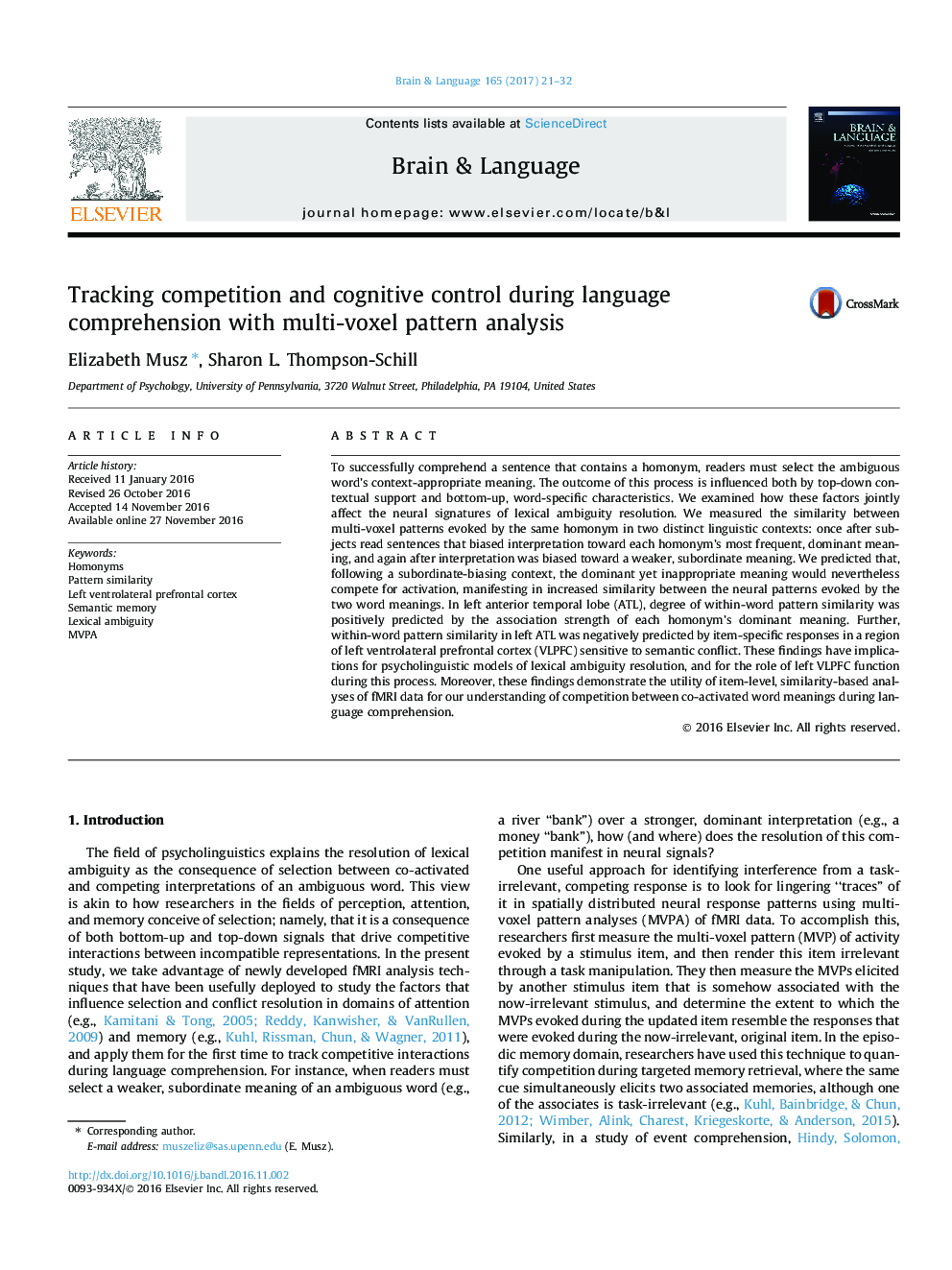| Article ID | Journal | Published Year | Pages | File Type |
|---|---|---|---|---|
| 5041312 | Brain and Language | 2017 | 12 Pages |
•Ambiguous noun-noun homonyms presented in sentence contexts.•Competition between dominant and subordinate meanings assessed with MVPA.•Patterns in left ATL show less competition when left prefrontal response increases.•Meaning frequency predicts competition between homonym meanings in left ATL.
To successfully comprehend a sentence that contains a homonym, readers must select the ambiguous word’s context-appropriate meaning. The outcome of this process is influenced both by top-down contextual support and bottom-up, word-specific characteristics. We examined how these factors jointly affect the neural signatures of lexical ambiguity resolution. We measured the similarity between multi-voxel patterns evoked by the same homonym in two distinct linguistic contexts: once after subjects read sentences that biased interpretation toward each homonym’s most frequent, dominant meaning, and again after interpretation was biased toward a weaker, subordinate meaning. We predicted that, following a subordinate-biasing context, the dominant yet inappropriate meaning would nevertheless compete for activation, manifesting in increased similarity between the neural patterns evoked by the two word meanings. In left anterior temporal lobe (ATL), degree of within-word pattern similarity was positively predicted by the association strength of each homonym’s dominant meaning. Further, within-word pattern similarity in left ATL was negatively predicted by item-specific responses in a region of left ventrolateral prefrontal cortex (VLPFC) sensitive to semantic conflict. These findings have implications for psycholinguistic models of lexical ambiguity resolution, and for the role of left VLPFC function during this process. Moreover, these findings demonstrate the utility of item-level, similarity-based analyses of fMRI data for our understanding of competition between co-activated word meanings during language comprehension.
